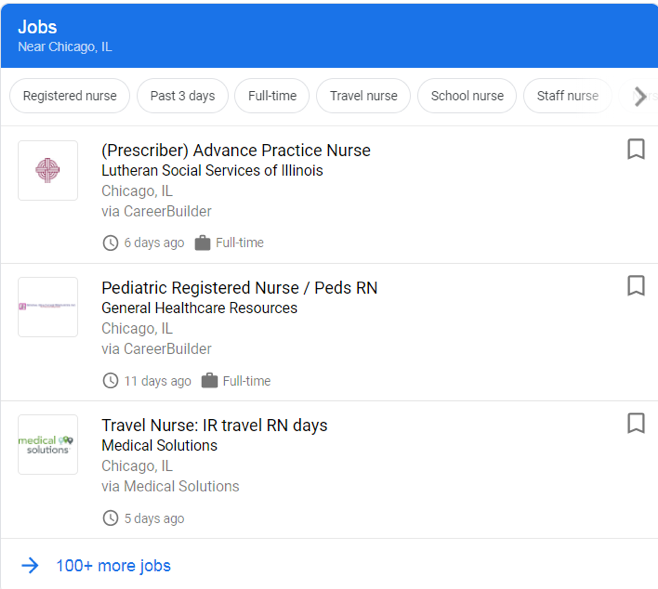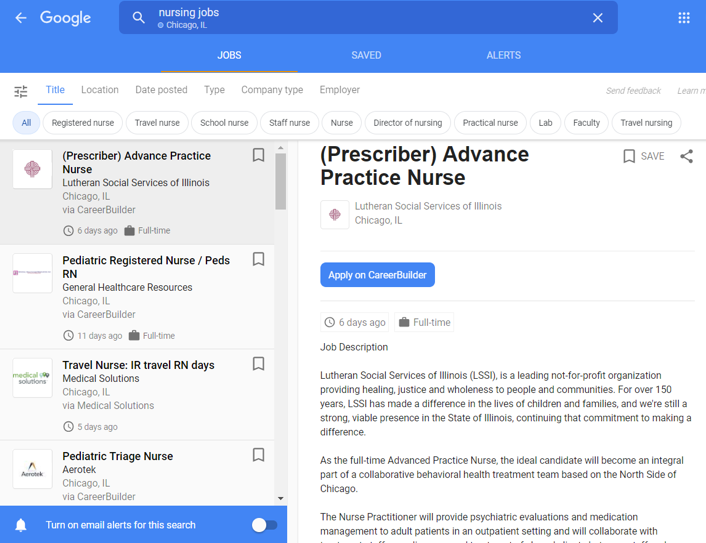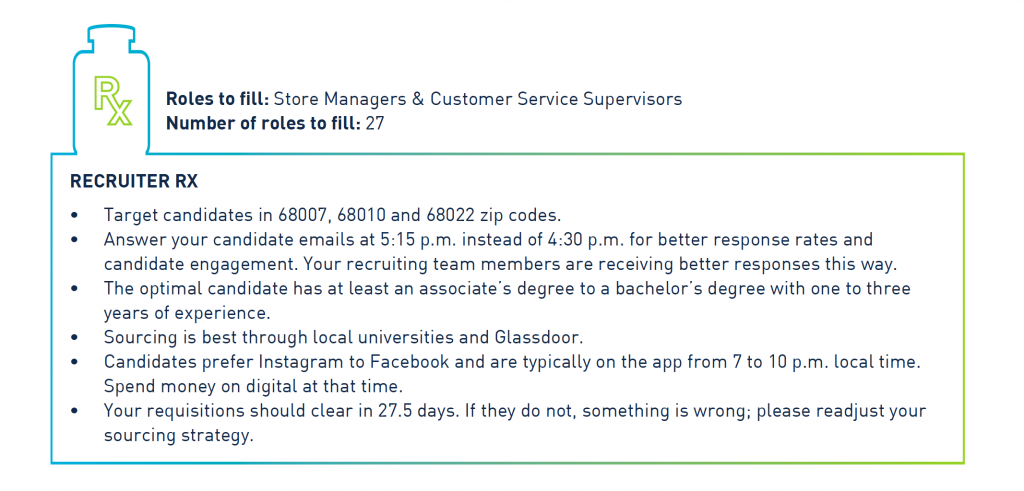Let’s face it – we live in an ever-changing world, where one of the biggest challenges is keeping up with the latest trend.
For an update on talent acquisition trends, PeopleScout hosted Madeline Laurano, talent analyst and founder of Aptitude Research, at our North American Talent Summit. Laurano spoke on the top trends she is seeing through her qualitative and quantitative research, and provided clarity on the crowded market.
Laurano shared that the current state of talent acquisition has fundamentally shifted due to the record increase in job openings and decrease in the available talent pool. This contributes to the rise of competition for talent across industries and the tremendous pressure organizations face to find the right talent.
Laurano presented a few key solutions to aid in managing this overarching challenge, including strengthening employer branding, simplifying your talent strategy with technology, improving candidate communication, using data to drive decisions and exploring total workforce solutions.
In this article, we’ll walk through Laurano’s report on the current state of talent acquisition, and dive into how a focus on employer branding can help you stay on top of the trends in talent acquisition.
Current State & Challenges
Laurano’s research shows a fundamental shift in talent acquisition over the past few years, which she attributes to changing market conditions. The numbers prove it – there’s a high demand for skills and a low supply of candidates, which increases both competition for talent and the cost of a quality hire.
High Demand for Skills
Nearly half of U.S. employers attribute unfilled job openings to a lack of qualified candidates. Additionally, 75% of human resource professionals who have recruiting difficulty say there is a shortage of skills in candidates for job openings. However, 74% of organizations are investing just $500 per employee on training and development between upskilling and reskilling.
The skills gap is widening particularly for IT, healthcare, manufacturing and really any industry that has specialized or technical roles. Based on her research, Laurano recommends that organizations invest in technology and digital roles to foster ideas and monitor industry trends. More than 5 million jobs in information technology are expected to be added globally by 2027.
Low Supply of Candidates
“Statistics show employers are having a difficult time filling job openings and are competing across industries for talent, which is a major challenge in the industry and one we haven’t seen before,” Laurano said.
A 2017 PWC survey of CEOs found that 77% said the greatest threat to organizations was the availability of talent. The unemployment rate is at a record-low 3.7% in the U.S., with 106 months of continuous job growth – the longest stretch in the nation’s history. Canada ended the first half of the year with an unemployment rate of 5.5%, and many leading European and Asia Pacific economies posted strong job gains and continued low unemployment.
Quality of Hires
Laurano’s 2019 Quality of Hire Trends Report states that only 26% of organizations in her study have a formal methodology for defining quality of hire; one in three of those organizations said that they’re interested in tracking quality of hire, but they don’t know how to start. Therefore, there’s a lot of opportunity to improve how we calculate quality of hire.
Ultimately, organizations have to rethink their strategies and technology to attract the right candidates for them. So, how do organizations stay on top of these trends? Laurano says strengthening employer branding is one important way.
Strengthening Employer Branding
As a reminder, your employer brand is the perception and lived experiences of what it’s like to work for your organization. It also incorporates your employee value proposition (EVP), which captures the essence of your uniqueness as an employer and the give and get between you and your employees.
In her presentation, Laurano discussed the importance of strengthening employer branding as one way to stand out in the crowded market. As research shows, many organizations are investing plenty of resources into employer branding, but there is still room for improvement. As Laurano’s research shows, 62% of organizations invest in employer branding, however:
- One out of four organizations is unsure about its employer branding.
- 50% of organizations are unhappy with their employer branding tools.
- 37% of talent acquisition and recruitment specialists consider their knowledge of their employer brand as “weak” or “getting by” – despite it being identified as an area of critical importance.
Industry research agrees with Laurano, as one study shows that companies with stronger employer brands see a 43% decrease on average in the cost per candidate they hire, compared to their competitors. Additionally, when organizations specifically in the U.S. live up to their marketed EVP, new employees arrive with a higher level of commitment at 38%, compared to organizations that do not live up to their marketed EVP, which is at just 9%.
Digital Transformation
As Laurano noted, the digital space is a major aspect to consider in talent acquisition and employer branding. Whether it’s introducing digital or data specialist roles, the skills associated with those jobs assist organizations in recognizing their weaker areas and providing innovative ideas to capture their intended audiences. Laurano recommends incorporating the digital role heavily in your talent solution and to improve messaging. “Go where your candidates are,” she says. And, for the most part, that is the digital space. Research confirms this concept:
- In a U.S. survey, recruiters said the top investments for growing an employer brand were: social media (47%), company career website (21%), and marketing and advertising (12%).
- Social media is used by 59% of candidates to research organizations in which they’re interested.
Reactive vs. Proactive Recruiting Strategy
In Laurano’s presentation, she emphasized the value of organizations nurturing talent before they apply, or a proactive versus reactive approach:
Reactive
“If we were to take the reactive recruiting approach and turn it into a funnel, it might look something like the diagram above. Sourcers fill up the talent pipeline while recruiters manage the selection process on behalf of the organization. However, there is no one working on behalf of the candidate and no real engagement process at the top of the funnel. As a result, the recruiter spends more time on screening résumés, phone screens, etc.”
Proactive
“If we flip the time allocation where recruiters spend less time on screening and focus on ensuring they have targeted, qualified candidates to begin with, the results would differ. There would be a higher rate of effectiveness by investing in relationship-building with targeted pools of talent, as opposed to a reactive, start-stop recruiting approach.”
Additional research only reinforces the proactive method, as 67% of employed American adults agree that the application, interview or offer process would make or break their decision on whether to take a job.
Global Aspect
Employer branding is difficult for global organizations, as it’s not always about the organization, but also the specific location, as well, which can get complicated. The core of your employer brand should start with a universal truth, but effective employers will also create messaging that speaks directly to different audiences and geographies. Laurano suggests a need for transparency for global organizations, as well as local flexibility and solutions to strengthen your employer branding.
What’s Next for Your Talent Solution?
Keeping up with the latest trends can be challenging to say the least, especially in the talent industry. Laurano’s research into the fundamental shift in talent acquisition provided some key insights and solutions that are beneficial when combating such rapid changes.
About the Expert
Madeline Laurano’s primary focus during the last 12+ years has been on the talent management market, specializing in talent acquisition. Her insights are based on her work as an analyst and advisor in the human capital space and her latest research with HR and talent acquisition practitioners. Laurano’s work helps companies both validate and reevaluate their strategies and understand the role technology can play in driving business outcomes. Before Aptitude Research, Laurano held research roles at Aberdeen, Bersin by Deloitte, ERE Media and Brandon Hall Group. She is co-author of “Best Practices in Leading a Global Workforce,” and has been quoted in The Wall Street Journal, The Boston Globe, Yahoo News, and The Financial Times. She is a frequent presenter at industry conferences, including the HR Technology Conference and Exposition, SHRM, IHRIM, HCI’s Strategic Talent Acquisition conference, GDS International’s HCM Summit, and HRO Today. Visit her website at https://www.aptituderesearch.com.





